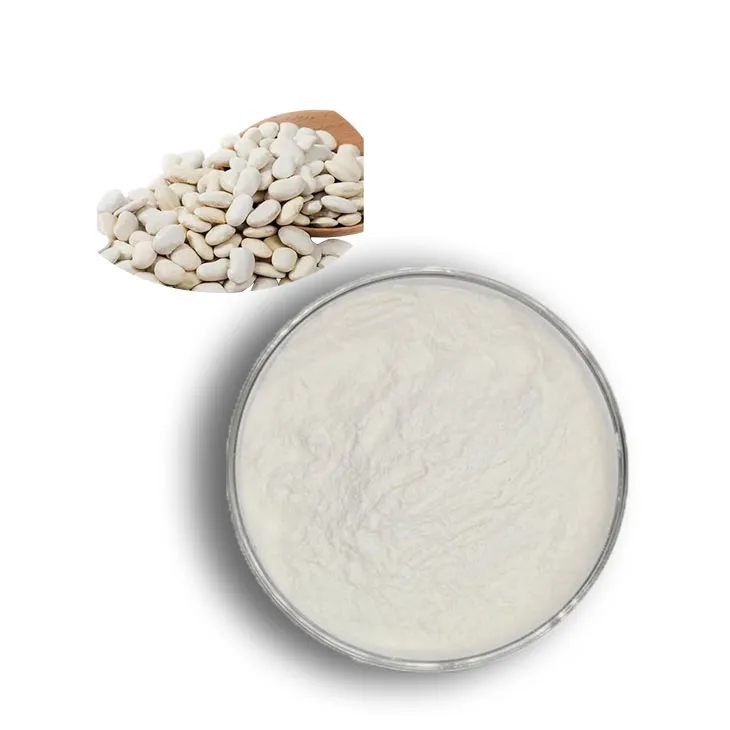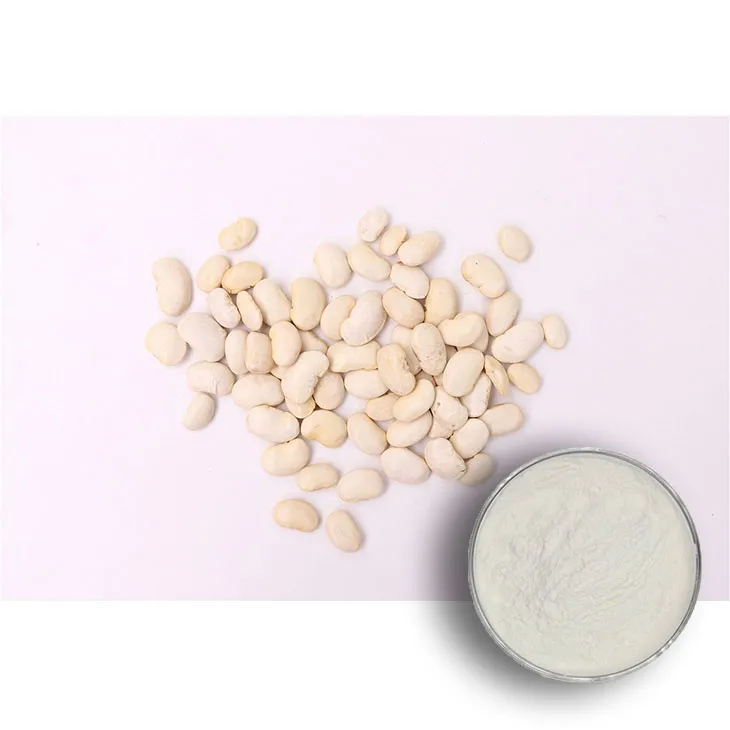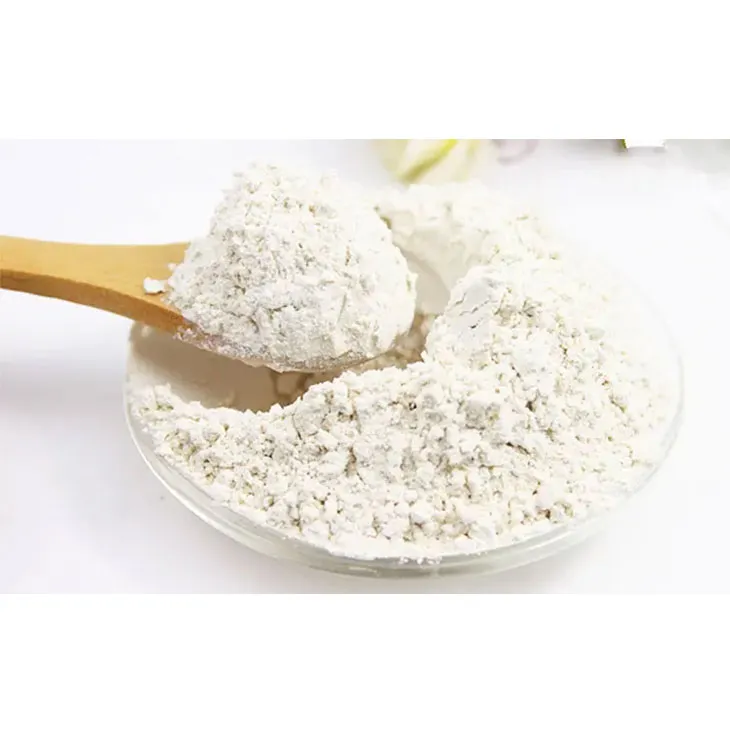- 0086-571-85302990
- sales@greenskybio.com
How to make powder from kidney bean extract?
2024-11-29

1. Introduction
Kidney beans are not only a common food ingredient but also a source of various beneficial substances. Extracting and turning the extract into powder can have multiple applications, such as in the food industry, for nutritional supplements, or in some medical research areas. However, it is crucial to ensure the safety and quality throughout the process. This article will explore the detailed steps, safety measures, quality control, and potential applications of making powder from Kidney Bean Extract.

2. Sourcing High - Quality Kidney Beans
2.1 Selection Criteria
Appearance: Look for kidney beans that are whole, without any signs of damage, such as cracks or holes. Uniform color is also a good indicator of quality. For example, red kidney beans should have a rich, consistent red color.
Size and Shape: Consistent size and the typical kidney - shaped form are important. Beans that are too small or misshapen may indicate poor growth conditions or potential quality issues.
Freshness: Fresh kidney beans will have a certain luster and feel firm to the touch. Avoid beans that look dull or feel soft, as they may be old or affected by pests or diseases.
2.2 Source Reliability
It is advisable to source kidney beans from reliable suppliers. This could be local farmers who follow good agricultural practices or well - known commercial suppliers with a good reputation for quality control. Certifications such as organic certifications can also be an added advantage, as they ensure that the beans are grown without excessive use of pesticides and fertilizers.

3. Preparation of Kidney Beans for Extraction
3.1 Cleaning
Thoroughly clean the kidney beans to remove any dirt, debris, or foreign particles. This can be done by rinsing the beans several times in clean water. Soaking the beans in water for a short period, say about 1 - 2 hours, can also help to loosen any dirt that is firmly attached. After soaking, drain the water and rinse the beans again.
3.2 Sorting
Manually sort through the cleaned beans to remove any discolored, damaged, or abnormal - looking beans. This step is essential to ensure that only high - quality beans are used for extraction.
3.3 Drying
After cleaning and sorting, dry the beans. This can be done in a well - ventilated area at room temperature. Ensure that the beans are spread out evenly to allow for proper drying. Alternatively, a low - temperature drying oven can be used, with the temperature set no higher than 40 - 50°C to avoid damaging the beans. The dried beans should be dry to the touch and have no signs of moisture.

4. Extraction of Kidney Bean Substances
4.1 Grinding
Once the kidney beans are dried, grind them into a fine powder. This can be achieved using a grinder or a food processor. The finer the powder, the more efficient the extraction process will be. However, make sure not to over - heat the beans during grinding, as this may affect the quality of the substances to be extracted.
4.2 Solvent Extraction
Choice of Solvent: Select an appropriate solvent for extraction. Common solvents used for plant extracts include ethanol, methanol, or water. Ethanol is often a popular choice as it can dissolve a wide range of compounds and is relatively safe for food - related applications.
Extraction Process: Add the ground kidney bean powder to the solvent in a suitable container. The ratio of powder to solvent can vary depending on the desired concentration of the extract. For example, a ratio of 1:5 (powder:solvent) can be a starting point. Stir the mixture thoroughly and let it stand for a period of time, usually several hours to overnight, to allow the substances in the kidney bean powder to dissolve into the solvent.
Filtration: After the extraction period, filter the mixture to separate the liquid extract from the solid residue. This can be done using filter paper in a funnel or a filtration device. The filtrate obtained is the Kidney Bean Extract.

5. Powder - making from the Extract
5.1 Evaporation
The next step is to evaporate the solvent from the Kidney Bean Extract to obtain a concentrated form. This can be done using a rotary evaporator, which is an efficient method for large - scale production. For small - scale production, a simple evaporation setup using a heat source and a container can be used. However, it is important to control the temperature during evaporation to avoid over - heating and damaging the active substances in the extract. The evaporation should be carried out at a low - to - moderate temperature, usually not exceeding 60 - 70°C.
5.2 Drying to Powder
Once the extract has been concentrated, dry it further to convert it into a powder. This can be done in a drying oven set at a low temperature, around 40 - 50°C. The drying process may take several hours to days, depending on the amount of extract and the drying conditions. Another option is freeze - drying, which can better preserve the quality of the extract. Freeze - drying involves freezing the extract first and then removing the moisture under vacuum conditions.
6. Safety Considerations
6.1 Solvent Safety
If using solvents such as ethanol or methanol, proper safety precautions must be taken. These solvents are flammable, so they should be stored and used in a well - ventilated area away from open flames or heat sources. Protective equipment such as gloves and goggles should be worn when handling these solvents.
6.2 Food Safety
Throughout the process, ensure that all equipment used is clean and suitable for food - related applications. Also, make sure that the final powder product is free from contaminants such as bacteria, fungi, or other harmful substances. This can be achieved through proper sterilization of equipment and quality control testing.
7. Quality Control
7.1 Purity Testing
Test the purity of the kidney bean powder. This can involve techniques such as chromatography to identify and quantify the different compounds present in the powder. Any impurities or unwanted substances should be within acceptable limits.
7.2 Activity Testing
If the kidney bean powder is intended for specific applications such as in nutritional supplements or medical research, test the biological activity of the powder. For example, if the powder is expected to have antioxidant properties, appropriate antioxidant assays can be carried out to ensure that the powder has the desired activity.
7.3 Microbiological Testing
Conduct microbiological tests to check for the presence of bacteria, yeast, and mold. The powder should meet the relevant food safety or industry - specific microbiological standards.
8. Potential Applications
8.1 Food Industry
In the food industry, kidney bean powder can be used as an ingredient in various products. For example, it can be added to baked goods like bread or cakes to enhance their nutritional value. It can also be used in the production of functional foods, such as those designed for weight management or to improve cardiovascular health.
8.2 Nutritional Supplements
Kidney bean powder can be formulated into nutritional supplements. It may contain beneficial compounds such as proteins, fibers, and certain bioactive substances that can support overall health. For instance, the fiber content in the powder can aid in digestion and help regulate blood sugar levels.
8.3 Medical Research
In medical research, the extract and powder from kidney beans can be studied for their potential pharmacological properties. For example, they may have anti - inflammatory or anti - cancer properties that can be explored further for the development of new drugs or therapies.
FAQ:
Question 1: What are the key factors in sourcing high - quality kidney beans for extract?
When sourcing kidney beans for extract, several factors are crucial. Firstly, the origin of the beans matters. Kidney beans from regions with suitable climate and soil conditions tend to be of better quality. For example, areas with well - drained soil and appropriate sunlight exposure can produce beans with good flavor and nutritional content. Secondly, look for beans that are free from visible defects such as mold, insect damage, or discoloration. These can affect the quality of the extract. Also, consider the freshness of the beans. Fresher beans are more likely to yield a high - quality extract as they retain more of their natural compounds.
Question 2: What are the common extraction methods for kidney bean extract?
One common method is solvent extraction. This involves using a suitable solvent, such as ethanol or water, to dissolve the desired compounds from the kidney beans. For water extraction, the beans are typically soaked in water, and then the liquid is separated from the solid matter through filtration or centrifugation. Ethanol extraction can be more effective for certain compounds. Another method is enzymatic extraction, where specific enzymes are used to break down the cell walls of the kidney beans to release the extractable components. This method can be more targeted in obtaining specific compounds but may be more complex and costly.
Question 3: How can we ensure safety during the process of making powder from kidney bean extract?
Safety is of utmost importance. Firstly, during the extraction process, ensure that all solvents used are food - grade and safe for human consumption if the powder is intended for food or supplement applications. For example, if using ethanol, it should be pure enough and free from harmful impurities. Secondly, proper hygiene should be maintained throughout the process. All equipment used for extraction and powder - making should be thoroughly cleaned and sanitized to prevent contamination. Also, when handling kidney beans, make sure they are properly cooked or processed as raw kidney beans contain toxins that can be harmful. If the powder is for other non - food applications, relevant safety regulations for that particular use should still be followed.
Question 4: What are the quality control measures in making powder from kidney bean extract?
Quality control starts from the sourcing of the kidney beans. As mentioned before, ensuring the beans are of high quality is the first step. During the extraction process, parameters such as temperature, extraction time, and solvent - to - bean ratio need to be carefully controlled. For example, too high a temperature during extraction may degrade some of the active compounds in the extract. After extraction, the purity of the extract can be analyzed using techniques like chromatography to ensure that it contains the desired components and is free from contaminants. When making the powder, factors like particle size distribution and moisture content need to be monitored. A consistent particle size is important for the powder's functionality and appearance, and the moisture content should be within an acceptable range to prevent spoilage or caking.
Question 5: What are the potential applications of kidney bean extract powder?
Kidney bean extract powder has several potential applications. In the food industry, it can be used as a natural food coloring agent due to its color - imparting properties. It may also be added to certain food products as a source of dietary fiber or for its antioxidant properties. In the pharmaceutical or nutraceutical field, the extract powder may contain bioactive compounds that could have potential health benefits such as helping with blood sugar regulation or providing anti - inflammatory effects. Additionally, in the cosmetic industry, it could be used in skincare products for its antioxidant and potential skin - conditioning properties.
Related literature
- Kidney Bean Extract: Properties and Potential Applications"
- "Advanced Techniques in Kidney Bean Extract Powder Production"
- "Safety Considerations in Kidney Bean - Based Product Manufacturing"
- ▶ Hesperidin
- ▶ citrus bioflavonoids
- ▶ plant extract
- ▶ lycopene
- ▶ Diosmin
- ▶ Grape seed extract
- ▶ Sea buckthorn Juice Powder
- ▶ Beetroot powder
- ▶ Hops Extract
- ▶ Artichoke Extract
- ▶ Reishi mushroom extract
- ▶ Astaxanthin
- ▶ Green Tea Extract
- ▶ Curcumin Extract
- ▶ Horse Chestnut Extract
- ▶ Other Problems
- ▶ Boswellia Serrata Extract
- ▶ Resveratrol Extract
- ▶ Marigold Extract
- ▶ Grape Leaf Extract
- ▶ blog3
- ▶ blog4
-
L - Tyrosine Manufacturers from China.
2024-11-29
-
The Optimal Method for Extracting Diosmin.
2024-11-29
-
Chinese Motherwort Extract Suppliers.
2024-11-29
-
Chinese Rosemary Extract Powder Factory.
2024-11-29
-
Nature's Bounty Maca Extract.
2024-11-29
-
The best bamboo leaf extract in nature.
2024-11-29
-
Saw Palmetto Extract
2024-11-29
-
Cat Claw Extract
2024-11-29
-
Astaxanthin
2024-11-29
-
Senna Leaf Extract
2024-11-29
-
Konjac Powder
2024-11-29
-
Sea buckthorn oil
2024-11-29
-
Sophora Japonica Flower Extract
2024-11-29
-
Fig Extract
2024-11-29
-
Soy Extract
2024-11-29
-
Passionflower Extract
2024-11-29





















